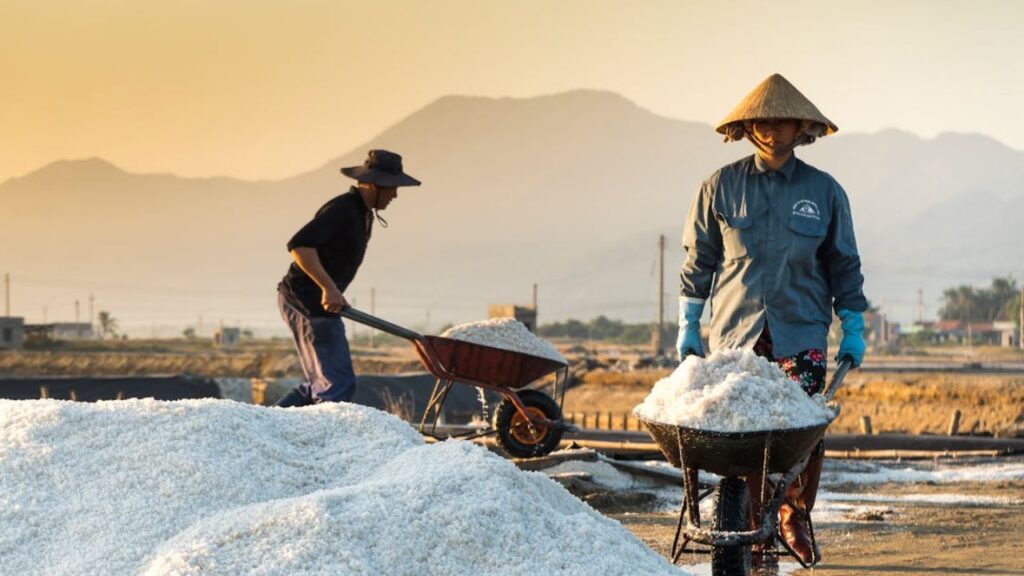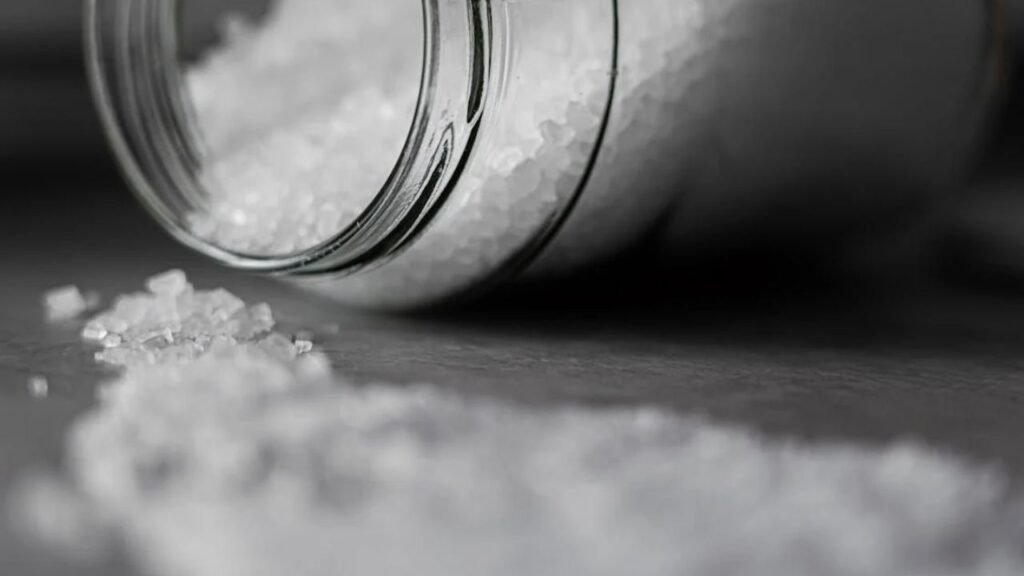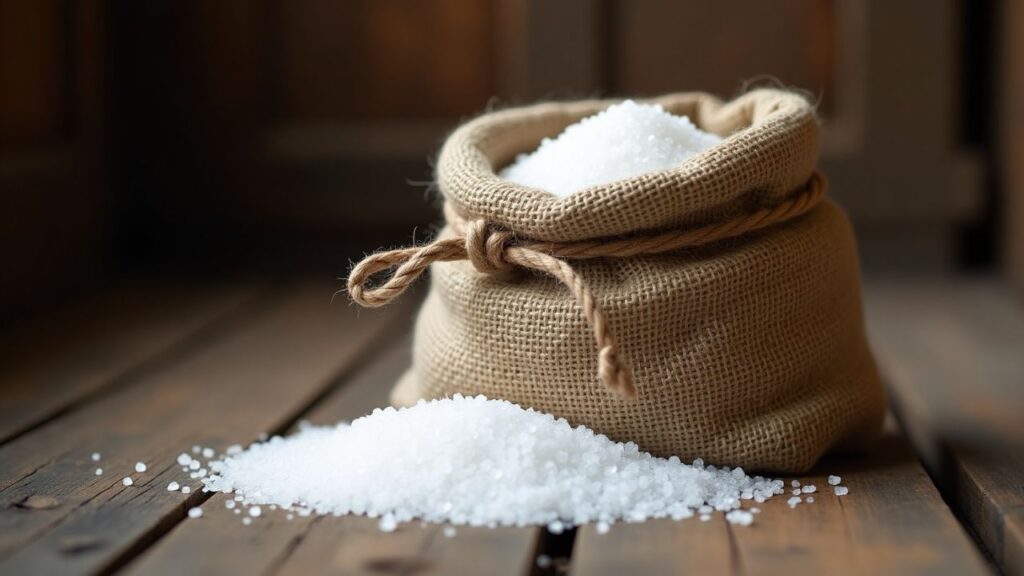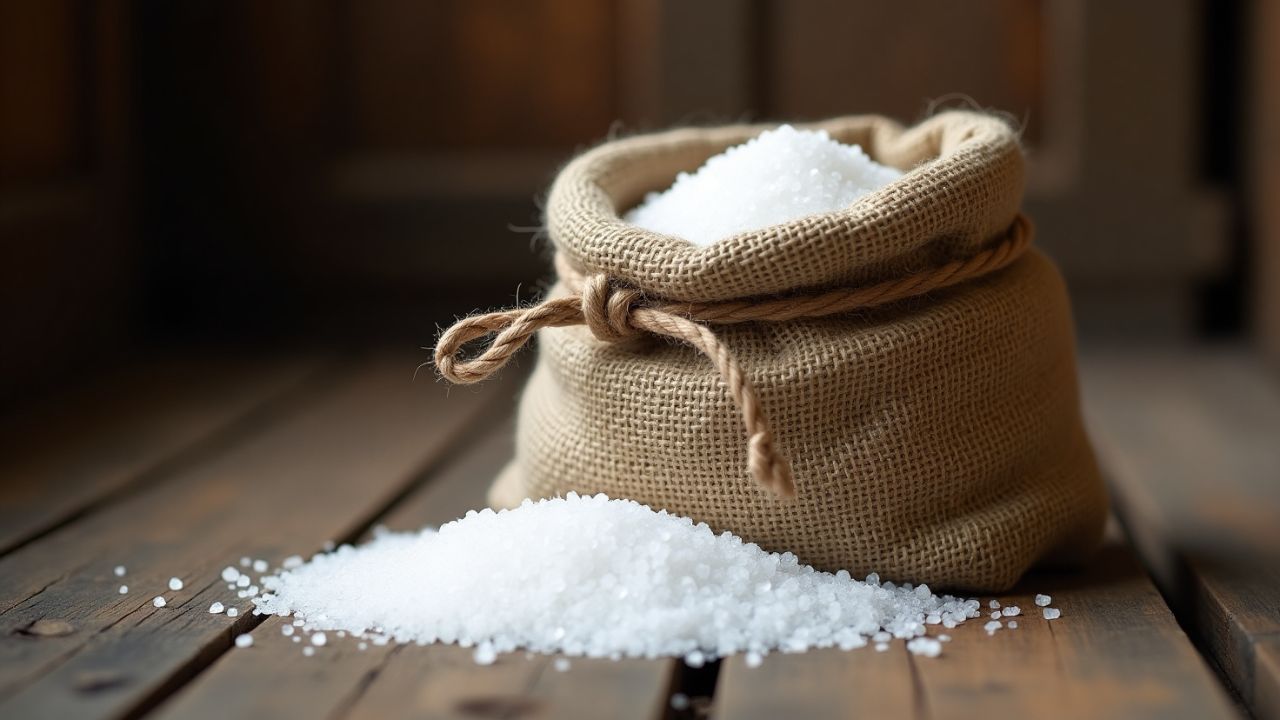When you consider a bag of salt, you might visualize a basic culinary need. But salt has a powerhouse of purposes from cooking to cleaning, health, and even industrial applications; it is significantly more than just a spice. We will discuss the several uses of salt in this post, with particular attention to how a small sack of sodium chloride may alleviate daily difficulties, enhance your health, and even guard your house. Whether your interests include home cooking, do-it-yourself projects, or simply curiosity, you will find why always keeping a bag of salt accessible is wise.

The History of Salt: From Ancient Treasure to Modern Necessity
For thousands of years, salt has affected human events. Ancient societies paid troops with it, utilized it to preserve food, and traded it like money (thus the phrase “salary”). Although a bag of salt is reasonably priced and readily available now, its worth has not changed. From improving tastes in gourmet meals to melting ice on winter roadways, modern applications range. The path this mineral travels from luxury to home basic demonstrates its adaptability and indispensable nature. Understanding its past will help us to value its importance in our present life.
Types of Salt: What’s in Your Bag?
Not every salt is made equally. One bag of sea salt, for example, comes from evaporated saltwater and has trace minerals including magnesium and potassium. Meanwhile, popular for de-icing roads, rock salt—often marketed in coarse chunks—is extracted from subterranean sources. Perfect for baking, finely ground table salt, iodized to prevent shortages, is Whether you’re cooking, doing crafts, or running housework, knowing the kind of salt you’re using counts. To make sure you are grabbing the correct sodium chloride sack for the job, always check the label.
Culinary Magic: How a Bag of Salt Elevates Your Cooking
The best flavor enhancer in the kitchen is salt. In sweets, a little finely crushed salt can balance sweetness; it can also improve savory meals and even tenderize meats. Chefs swear by methods like salting pasta water liberally (“it should taste like the sea”) or crusting a roast with coarse salt. Beyond flavor, salt draws away moisture and kills germs, therefore preserving items like pickles or cured meats. Cooking will release richer, more complex tastes in every meal if you have a bag of salt within arm’s reach.
Health Benefits: Salt’s Role in Wellness
Although too much sodium can be detrimental for health, biological processes depend on the proper level of salt. Premium salt in a bag offers electrolytes to control muscular contraction, nerve impulses, and hydration. For example, minerals thought to help detoxification and enhance skin health abound in Himalayan pink salt. Even respiratory problems are addressed with salt treatment, sometimes known as halotherapy. While moderation is important, rejecting salt completely runs against its advantages. Choose unprocessed versions, and see a doctor to help you balance your consumption.

Salt in Industry: Beyond the Kitchen Cabinet
Your salt bag is a workhorse in businesses all around, not only for household usage. A major component in making glass, paper, and textiles, salt de-icer roadways in winter, softens water in treatment facilities, and In farming, cattle need salt licks for their diet. Even the chemical business makes chlorine and soda ash from salt. One of the most economically valuable minerals on Earth, salt has great general use. Remember its industrial capabilities the next time you come over a bag of rock salt on a snowy road!
Household Hacks: Surprising Uses for a Bag of Salt
For many domestic chores, salt is an inexpensive, environmentally friendly fix. To absorb stains, apply a handful of salt in spills; combine it with vinegar to clean copper pans; or scrub sinks with a salt-and- baking-soda mixture. Though water doesn’t, it destroys weeds in garden walkways, removes smells in shoes, and even puts out grease fires. Under your sink, keep a bag of salt handy to save money on specialized cleansers and cut chemical use at home.
Storing Salt: Keeping Your Sack Fresh and Functional
Store your salt bag in an airtight container far from moisture to extend its shelf life. Although salt by itself doesn’t go bad, clumping could complicate usage. Either use silica packets for your storage jar or add some grains of rice to help absorb humidity. Staying dry helps rock salt for de-icing from hardening. Correct storage guarantees that your salt stays ready for cooking, cleaning, or emergency use—no lost grains!
Eco-Friendly Salt: Sustainable Choices for a Greener Planet
Not all salt generation is ecologically benign. While too much road salting can damage streams, some mining operations disturb ecosystems. Look for goods like solar-evaporated sea salt that gather salt responsibly to help to lessen your effect. On frozen walkways, use a bag of salt carefully; sweep extra to stop run-off. Combine salt with biodegradable elements like lemon juice for cleaning. Your purchase and use of salt can have a significant impact from little adjustments.

DIY Salt Projects: Creative Ways to Use Your Bag of Salt
Get artistic with salt! Mix Epsom salt and aromatic oils to make a peaceful bath soak; make Christmas salt dough decorations; or use colored salt for vivid layered artwork in jars. Salt fixes colors in textiles, so enhancing the vibrancy of hues, hence a bag of salt can even assist you dye materials. Families, classrooms, or anyone else wishing to investigate the creative side of salt will find these crafts ideal. They also make sense since you already have some of the ingredients.
Types of Salt & Their Uses
| Type of Salt | Best For | Key Benefit | Unique Trait |
| Table Salt | Everyday cooking, baking | Affordable & widely available | Fine texture, often iodized for health |
| Sea Salt | Gourmet dishes, finishing | Natural minerals enhance flavor | Harvested from evaporated seawater 🌊 |
| Rock Salt | De-icing driveways, roads | Melts ice quickly & cheaply | Coarse chunks, not for cooking ❄️ |
| Himalayan Pink Salt | Wellness routines, décor | Rich in minerals, aesthetic appeal | Distinct pink color from iron oxide 💖 |
| Epsom Salt | Bath soaks, DIY projects | Relaxes muscles, non-edible use | Magnesium sulfate (not for eating!) 🛁 |
Why Understanding Salt Differences Matters
Knowing which bag of salt to grab saves time, money, and work. For instance, although putting Himalayan salt on ice steps is wasteful, pouring rock salt in your pasta water won’t work (it’s too coarse!). Matching the correct salt to the job guarantees wiser home tips, safer winters, and better cooking outcomes. Selecting environmentally beneficial choices like solar-evaporated sea salt also helps to save the earth. Whether your interests are home cooking, gardening, or do-it-yourself, this information transforms a basic sack of sodium chloride into a multitasking hero.
Conclusion
From prehistoric trade paths to contemporary kitchens and industries, a bag of salt has repeatedly shown its value. This little mineral is a multitasking wonder whether you’re melting ice, flavoring a food, or working on a do-it-yourself project. You will open countless opportunities by selecting the correct kind, applying it sensibly, and storing it correctly. One of the simplest, most potent instruments you will ever own is a sack of salt chloride.
FAQ’s
1. Can I use a bag of salt for things other than cooking?
Of course! For de-icing driveways, stain removal, odor elimination, and even handcrafted items like salt dough decorations, a bag of salt does miracles.
2. How long does a bag of salt last?
Though storing it in an airtight container to avoid clumping, salt does not expire. Maintaining its dryness will help it to remain usable for years.
3. Will rock salt damage my driveway or plants?
Eventually, rock salt will degrade concrete and harm plants. Use it sparingly; sweep extra; use ecologically friendly replacements like sand.
4. Is sea salt healthier than regular table salt?
Sea salt carries trace minerals even if both types have the same sodium content. Taste and texture help you decide; for health, moderation is most crucial.
5. Can I clean my home with just salt?
Exactly! Mix salt with vinegar as well as baking soda to disinfect sinks, get stains out, or polish pots and pans. This is a simple, chemical-free cleaning secret.
